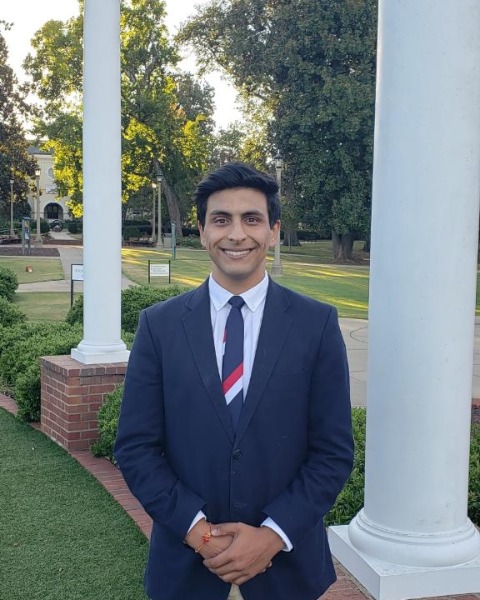Spine
Behind the Backbone: Profiling Leaders in Spine Fellowship Programs

Mehul Mehra, MD
Resident
Medical College of Georgia
Snellville, Georgia, United States
Presenting Author(s)
Introduction: The North American Spine Society (NASS) fellowship directory recognizes over 80 individual spine program directors. Spine fellowship programs are associated with departments of neurosurgery and/or orthopedics. This investigation sought to assess differences in demographic features, academic backgrounds, and scholarly achievements of spine fellowship program directors (PDs) based on gender and clinical training (neurosurgical vs. orthopedic).
Methods: A cross-sectional analysis was performed in May 2023 to compare demographic data, academic backgrounds, and research production (measured by H-index) of PDs for all NASS spine fellowships. Data was collected using publicly available sources including program and hospital websites, publicly-available curriculum vitae, and online public databases (Doximity, Castle Connolly, Healthgrades, etc.). Research metrics were obtained from SCOPUS and iCite. R was used to perform Mann-Whitney U test and Kruskal-Wallis H test for nonparametric data, and post-hoc analysis adjusted with a Bonferroni correction.
Results: Within the NASS online directory, 77 spine fellowship programs were identified, with 85 individual program directors or co-directors listed and included in the analysis. The average program director age was 52.3 ± 9.3 years with a mean clinical experience of 25.3 ± 9.9 years following medical school graduation. Of note, the vast majority were male (98%). Following multivariate analysis with post hoc correction, significant differences in age (60 vs. 47 years, p = 0.0021), clinical experience (28 vs. 21 years, p = 0.004), and H-index score (36 vs. 15, p = 0.024) were seen between program directors who led self-described neurosurgical vs. orthopedic spine fellowship programs, respectively.
Conclusion : Significant differences in demographic and scholarly metrics could stem from numerous factors, including the longer length of and fewer overall trainee positions in neurosurgical residency relative to orthopedics. Furthermore, this study indicated that spine fellowship PDs listed in the NASS were principally males with extensive scholarly productivity, with opportunities for and trends towards increased female leadership.
Methods: A cross-sectional analysis was performed in May 2023 to compare demographic data, academic backgrounds, and research production (measured by H-index) of PDs for all NASS spine fellowships. Data was collected using publicly available sources including program and hospital websites, publicly-available curriculum vitae, and online public databases (Doximity, Castle Connolly, Healthgrades, etc.). Research metrics were obtained from SCOPUS and iCite. R was used to perform Mann-Whitney U test and Kruskal-Wallis H test for nonparametric data, and post-hoc analysis adjusted with a Bonferroni correction.
Results: Within the NASS online directory, 77 spine fellowship programs were identified, with 85 individual program directors or co-directors listed and included in the analysis. The average program director age was 52.3 ± 9.3 years with a mean clinical experience of 25.3 ± 9.9 years following medical school graduation. Of note, the vast majority were male (98%). Following multivariate analysis with post hoc correction, significant differences in age (60 vs. 47 years, p = 0.0021), clinical experience (28 vs. 21 years, p = 0.004), and H-index score (36 vs. 15, p = 0.024) were seen between program directors who led self-described neurosurgical vs. orthopedic spine fellowship programs, respectively.
Conclusion : Significant differences in demographic and scholarly metrics could stem from numerous factors, including the longer length of and fewer overall trainee positions in neurosurgical residency relative to orthopedics. Furthermore, this study indicated that spine fellowship PDs listed in the NASS were principally males with extensive scholarly productivity, with opportunities for and trends towards increased female leadership.

.jpg)